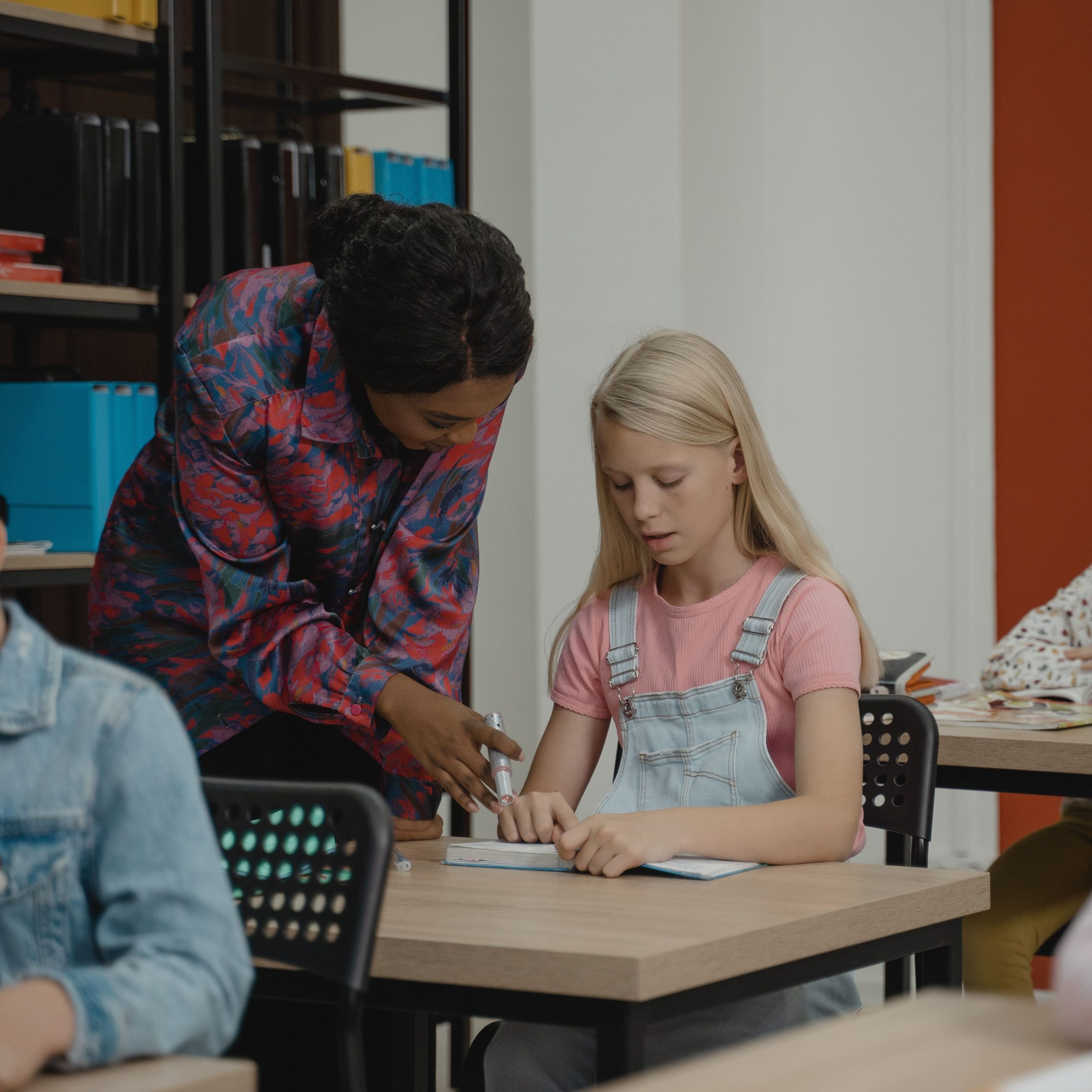
Personalized feedback is an essential aspect of the learning process that enables students to develop the skills and knowledge necessary for academic and personal growth. This type of feedback is tailored to an individual student’s needs, abilities, and preferences, providing them with the necessary guidance to improve their academic performance.
Understanding Personalized Feedback
Personalized feedback is a form of evaluation or assessment that focuses on the specific learning needs of each student. It is designed to help students identify their strengths and weaknesses, promote a growth mindset, and encourage self-reflection and self-assessment. Personalized feedback is provided by teachers, mentors, or peers and involves a one-to-one interaction between the giver and the recipient.
What is Personalized Feedback?
Personalized feedback is a communication process aimed at providing accurate, timely, and individualized information about a student’s performance. It can take many forms, including written comments, oral feedback, and grade updates. The primary goal of personalized feedback is to help students grow academically and personally by identifying areas that need improvement and encouraging them to build on their strengths.
For example, if a student is struggling with a particular concept, personalized feedback might involve providing additional resources, such as videos or articles, to help them better understand the topic. Alternatively, if a student is excelling in a particular area, personalized feedback might involve challenging them with more advanced material or encouraging them to explore related topics in greater depth.
Personalized feedback can also be used to help students develop important skills, such as critical thinking, problem-solving, and effective communication. By providing feedback on these skills, teachers can help students improve their ability to think analytically and express themselves clearly and persuasively.
The Difference Between Personalized and Generic Feedback
Generic feedback is a one-size-fits-all approach that provides students with broad, general feedback that may not be relevant to their specific learning needs. In contrast, personalized feedback takes into account the unique learning style, abilities, and preferences of each student. By providing feedback that is tailored to individual needs, personalized feedback can help students succeed in ways that generic feedback cannot.
For example, generic feedback might involve simply telling a student that they need to improve their writing skills. However, personalized feedback would go further by identifying specific areas for improvement, such as grammar, sentence structure, or organization, and providing targeted feedback on how to improve in these areas.
Overall, personalized feedback is an essential tool for promoting student growth and development. By providing individualized support and guidance, teachers can help students achieve their full potential and become confident, lifelong learners.
The Importance of Personalized Feedback in Learning
Personalized feedback has become increasingly important in modern education. With the advent of technology and the rise of individualized learning, students are no longer seen as passive recipients of information, but rather active participants in their own learning process. Personalized feedback is a key component of this new approach to education, as it allows teachers to tailor their instruction to the specific needs and interests of each student.
There are numerous benefits to embracing personalized feedback in the classroom. For both students and teachers, it can enhance engagement, strengthen relationships, and promote a growth mindset. Let’s take a closer look at some of these benefits.
Enhancing Student Engagement
One of the most significant benefits of personalized feedback is its ability to enhance student engagement. When students receive feedback that is tailored to their individual needs and interests, they are more likely to be motivated to learn. This is because personalized feedback promotes active learning and participation, which can help students feel more invested in their own education.
For example, a student who is struggling with a particular concept may feel discouraged and disengaged if they receive generic feedback that does not address their specific difficulties. However, if their teacher provides personalized feedback that is targeted to their specific needs, the student may be more likely to feel supported and encouraged to continue learning.
Promoting a Growth Mindset
Another benefit of personalized feedback is its ability to promote a growth mindset. A growth mindset is the belief that intelligence and abilities can be developed through hard work and dedication. Students who possess a growth mindset are more likely to embrace challenges and view mistakes as opportunities for learning.
Personalized feedback can help students develop a growth mindset by focusing on their strengths and helping them overcome their weaknesses. By recognizing their achievements and providing constructive feedback on areas that need improvement, students can develop the resilience and perseverance required for academic and personal success.
Encouraging Self-Reflection and Self-Assessment
Personalized feedback also helps students become more self-aware and reflective learners. When students receive regular personalized feedback, they are better able to assess their own performance, develop their critical thinking skills, and take responsibility for their own learning.
For example, a student who receives personalized feedback on their writing may be more likely to reflect on their own writing process and identify areas for improvement. This can help them develop stronger writing skills over time, as they become more aware of their own strengths and weaknesses.
In conclusion, personalized feedback is a crucial component of modern education. By enhancing engagement, promoting a growth mindset, and encouraging self-reflection and self-assessment, personalized feedback can help students achieve academic and personal success. Teachers who embrace personalized feedback can also benefit from increased efficiency, improved feedback quality, and greater support for their students.

Implementing Personalized Feedback in the Classroom
Implementing personalized feedback in the classroom is an excellent way to enhance student learning and improve their academic performance. Personalized feedback is a process of providing feedback to students based on their individual learning needs, strengths, and weaknesses. It requires a balance between providing individualized feedback to all students and managing the workload of teachers. By adopting strategies that prioritize efficiency, utilize technology, and promote consistency, teachers can provide effective personalized feedback to all students.
Strategies for Providing Personalized Feedback
Effective personalized feedback requires a clear understanding of the learning objectives, expectations, and needs of each student. One strategy for providing personalized feedback is by using rubrics. Rubrics are scoring tools that help teachers evaluate student performance based on pre-determined criteria. By using rubrics, teachers can provide targeted feedback that aligns with the learning objectives and expectations of each student. Another strategy is by using checklists. Checklists help teachers keep track of student progress and provide specific feedback to each student. Finally, ongoing assessment is another strategy that can help teachers provide personalized feedback. Ongoing assessment involves monitoring student progress throughout the learning process and providing feedback on a regular basis.
By adopting these strategies, teachers can provide targeted feedback that is specific, timely, and constructive. This feedback can help students improve their academic performance and motivation.
Utilizing Technology for Efficient Feedback
Technology can provide teachers with efficient ways to provide personalized feedback to students. Online grading is one such tool that can help teachers provide timely feedback while streamlining their workload. With online grading, teachers can grade assignments, provide feedback, and communicate with students all in one place. Additionally, feedback templates can help teachers provide consistent feedback to all students. Feedback templates are pre-written comments that teachers can use to provide feedback on student work. Finally, automated systems can help teachers provide personalized feedback to students. Automated systems use algorithms to analyze student work and provide feedback based on pre-determined criteria.
By utilizing technology, teachers can provide personalized feedback to students outside of the classroom. This can help students stay on track with their learning and provide them with the support they need to succeed.
Balancing Workload and Effective Feedback
Providing personalized feedback requires a significant investment of time and energy by teachers. However, by prioritizing feedback as an essential aspect of the learning process and developing efficient strategies, teachers can balance their workload while still providing effective personalized feedback to all students. One strategy for balancing workload and effective feedback is by setting clear expectations for students. By setting clear expectations, teachers can reduce the amount of time they spend providing feedback and ensure that feedback is targeted and specific. Another strategy is by using peer assessment. Peer assessment involves having students evaluate each other’s work and provide feedback. This can help reduce the workload of teachers while still providing personalized feedback to students.
In conclusion, implementing personalized feedback in the classroom is an effective way to enhance student learning and improve their academic performance. By adopting strategies that prioritize efficiency, utilize technology, and promote consistency, teachers can provide effective personalized feedback to all students. Personalized feedback can help students improve their academic performance and motivation while also reducing the workload of teachers.
The Impact of Personalized Feedback on Student Performance
Personalized feedback can have a profound impact on a student’s academic performance, motivation, and confidence. By focusing on specific learning needs and providing targeted guidance, personalized feedback can help students achieve their goals and reach their full potential.
Improved Academic Achievement
Personalized feedback can help students improve their academic achievement by providing them with the necessary guidance and support to succeed. Teachers can identify areas where students need improvement and provide them with specific feedback and guidance to help them overcome their challenges. This can be particularly helpful for students who struggle with certain subjects or concepts, as personalized feedback can provide them with the tools they need to succeed.
Furthermore, personalized feedback can help students develop a deeper understanding of the material they are learning. By providing targeted feedback that is tailored to their learning needs, students can gain a better understanding of the subject matter and improve their overall academic performance.
Increased Motivation and Confidence
Personalized feedback can help increase students’ motivation and confidence by recognizing their achievements and providing constructive feedback on areas that need improvement. When students receive feedback that is tailored to their individual needs, they are more likely to feel motivated and engaged in their learning. This can lead to increased confidence and a greater sense of accomplishment.
Moreover, personalized feedback can help students develop a growth mindset. By focusing on the process of learning and improvement, rather than just the end result, students can develop a more positive attitude towards their academic work and feel more confident in their abilities.
Strengthened Teacher-Student Relationships
Personalized feedback requires effective communication and collaboration between teachers and students. When teachers provide personalized feedback that is honest, specific, and supportive, they can build a stronger relationship with their students based on trust, respect, and mutual understanding.
Moreover, personalized feedback can help teachers better understand their students’ individual learning needs and tailor their teaching approach accordingly. This can lead to a more positive and productive learning environment, where students feel supported and valued.
In conclusion, personalized feedback can have a significant impact on student performance, motivation, and confidence. By providing targeted guidance and support, teachers can help students achieve their academic goals and reach their full potential.
Conclusion
The benefits of personalized feedback in the classroom are clear. By providing targeted guidance, promoting active learning, and encouraging self-reflection and self-assessment, teachers can help students achieve their academic and personal goals. By adopting effective strategies, managing their workload, and utilizing technology, teachers can provide personalized feedback to all students while maintaining their own efficiency. Finally, by recognizing the impact of personalized feedback on student performance, motivation, and confidence, teachers can build stronger relationships with their students and foster a culture of academic growth and success.



